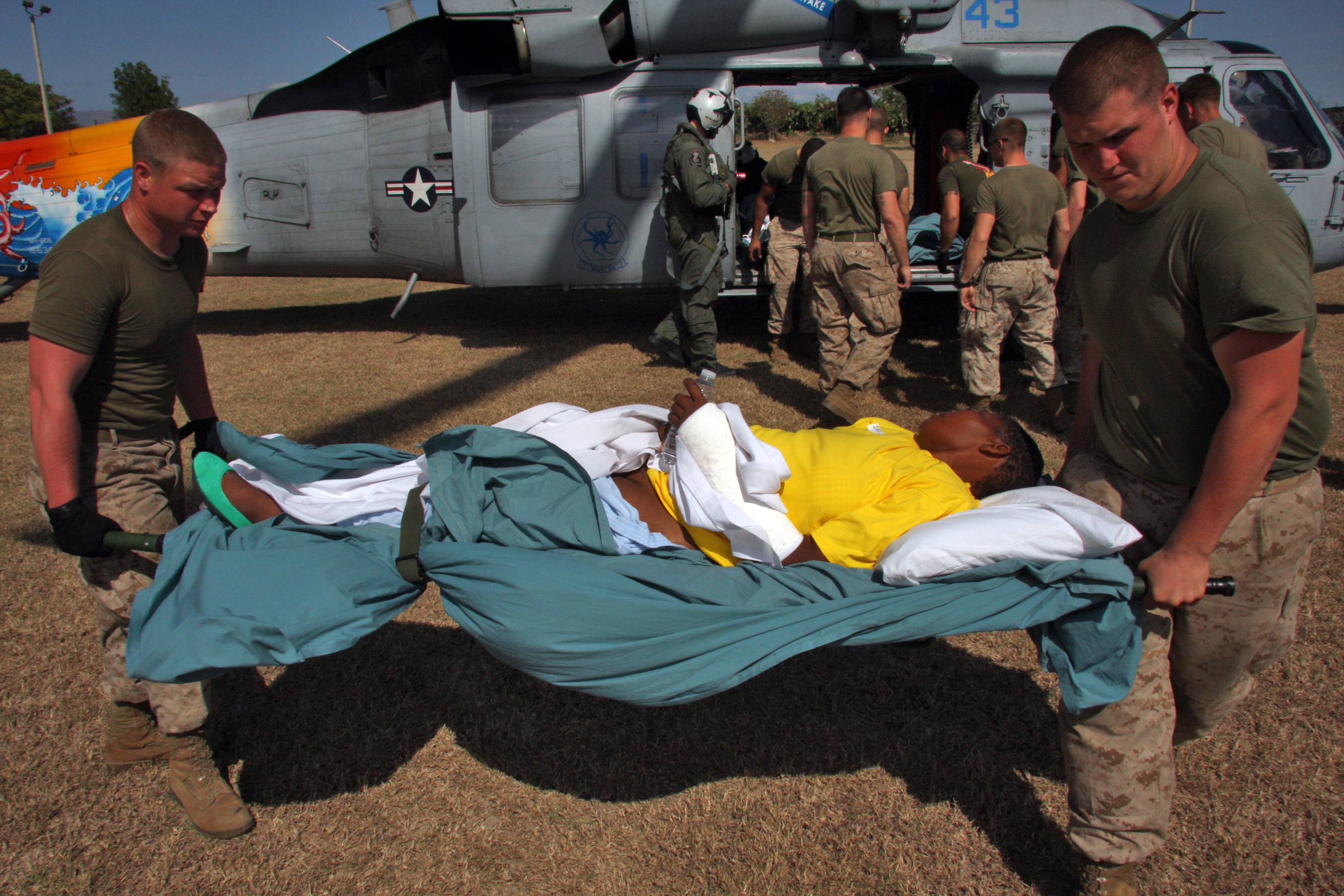60th Anniversary Main | 1963-1979 | 1980 – 1999 | 2000 - Present
2000 - 2004
In 2000, the U.S. Congress allocated more than $1.6 billion in U.S. foreign assistance to support Colombian President Andrés Pastrana’s nation building program called Plan Colombia. In turn, USSOUTHCOM expanded its intelligence, logistic, materiel, and training support to Colombian security forces. On September 11, 2001, al-Qaeda terrorists launched a series of coordinated suicide attacks on the United States. They killed approximately 2,900 U.S. citizens, including 184 individuals at the Pentagon.
U.S. forces invaded Afghanistan, a safe haven for the al-Qaeda terrorist network, in October 2001. USSOUTHCOM supported the War on Terrorism through intelligence gathering and counter-terrorism activities in Latin America. In 2002, U.S. military officials established Joint Task Force Guantanamo to detain and interrogate enemy combatants.
In October 2002, the George W. Bush administration established the U.S. Northern Command (USNORTHCOM) to improve the command, control, and coordination of North American defense activities. The directive split responsibilities for the Caribbean between USNORTHCOM and USSOUTHCOM. To more practically distribute responsibilities, U.S. officials later assigned Cuba, Puerto Rico, the U.S. Virgin Islands, and the Bahamas to the USSOUTHCOM’s area of responsibility. In February 2004, Canadian, Chilean, French, and U.S. units formed the Multinational Interim Force (MIF) Haiti to stabilize the Caribbean country. The MIF later turned peacekeeping duties over to the United Nations Stability Mission in Haiti.

U.S. counterdrug operations in the Caribbean, circa 2000. U.S. Southern Command involvement in counter illicit trafficking began in 1983. In 1989, the George Bush administration (1989-93) asked the U.S. military to detect and monitor illicit aerial and maritime shipments to the United States. (Source: U.S. Southern Command)
2005 - 2010
To accomplish their mission in the Americas, USSOUTHCOM leaders recognized the importance of greater interagency cooperation. General Craddock ordered the Command Engineer to begin planning for a consolidated headquarters building.
A major USSOUTHCOM transformation initiative resulted in the reorganization of the Headquarters staff, development of a command-wide Strategic Planning Process, and overhaul of the civilian personnel system. In July 2008, Colombian security forces, long supported by the United States, rescued three USSOUTHCOM contractors held by the Revolutionary Armed Forces of Colombia. In 2009, U.S. Naval Forces Southern Command, designated U.S. Fourth Fleet in 2008, sponsored the fiftieth UNITAS naval training exercise, the longest running multinational military exercise in the world.
Throughout 2009, USSOUTHCOM participated in several major multinational exercises such as Panamax, which included personnel from twenty nations and engaged in humanitarian assistance disaster relief (HA/DR) efforts in El Salvador and Costa Rica. Operation Unified Response sent over 20,000 personnel and distributed millions of pounds of relief supplies and other aid in response to a devastating earthquake that struck Haiti in January 2010. The Operation became the largest HA/DR mission in USSOUTHCOM’s history.
Resources:
National Museum of the U.S. Navy: Operation Unified Response
National Defense University: Operation Unified Response
AFSOC History: Civil Affairs Team (CAT) 812 in Haiti

U.S. Marines and Sailors of Combat Logistics Battalion 24, 24th Marine Expeditionary Unit, off-load three Haitian patients from a MH-60 helicopter, Feb. 5, 2010. The patients were transported from the USNS Comfort. (DoD Photo)
2010-Present
In December 2010, USSOUTHCOM moved into its new headquarters, relocating personnel from several different area facilities while maintaining information security and operational capability throughout.
When a 7.0 magnitude earthquake struck Haiti in January 2010, destroying buildings and killing more than 200,000 people, the Haitian government requested emergency support through the U.S. Embassy, and SOUTHCOM quickly sprang into action. Joint Task Force-Haiti provided the devastated nation with medical care, engineering support, and humanitarian assistance to help the Haitian people.
Today, U.S. Southern Command is a vibrant and innovative combatant command committed to safeguarding the security of the United States and the interests of democratic partner nations in our area of responsibility.
Since its inception, U.S. Southern Command has established a legacy of trusted partnership, reliable military-to-military training, peacekeeping, and capacity building throughout the region. Sixty years – and many contingencies -- later, we are still leading the way ahead!

SOUTHCOM headquarters, 2023. (SOUTHCOM photo)
60th Anniversary Main | 1963-1979 | 1980 – 1999 | 2000 - Present